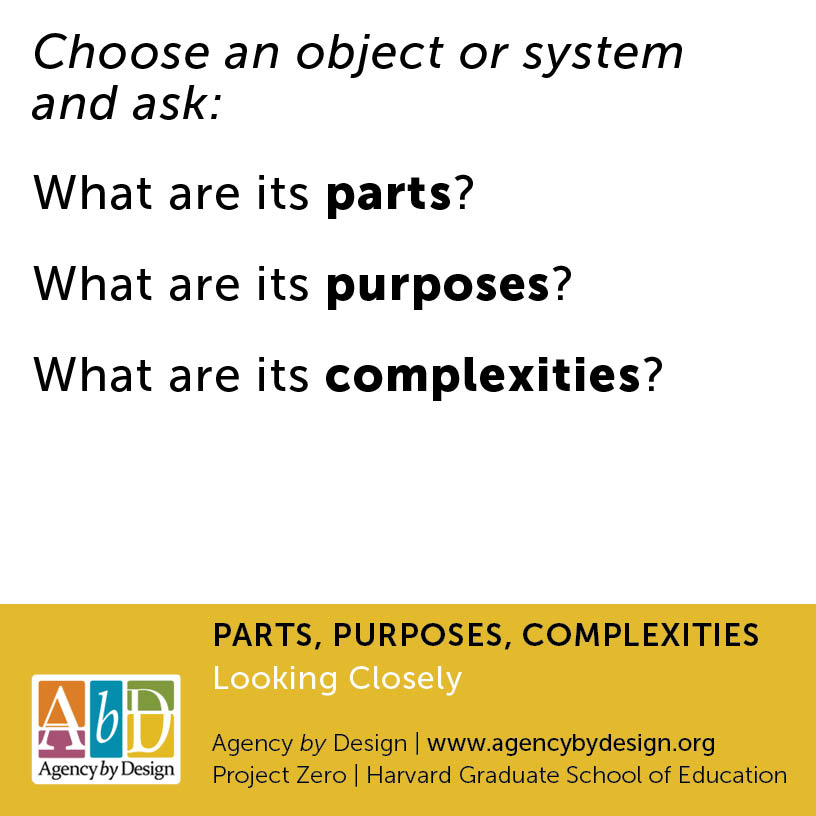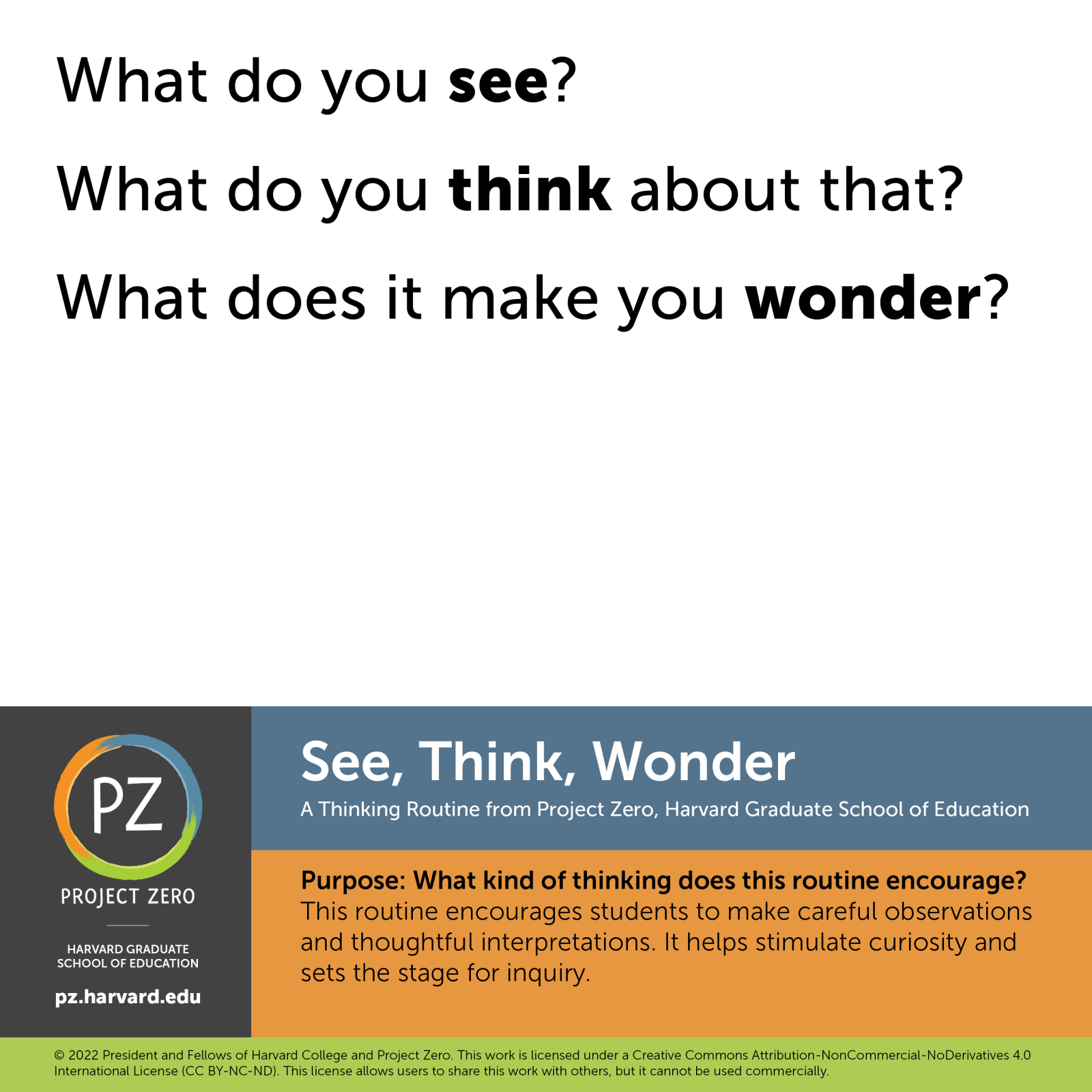Nicole Wilkinson
Library Media Specialist
Osborne Elementary - Quaker Valley School District
Primary (5 to 8 years old), Elementary (9 to 12 years old)
Teacher/Educator, Librarian/Media Specialist
Language Arts And English, Mathematics, Science, Social Studies, World Languages, Arts, Other
: Digital Learner Skills
I am an elementary school Library Media Specialist at Osborne Elementary (K-5) in Quaker Valley School District. I hold a B.A. in Anthropology/Archaeology, History, and German from the University of Pittsburgh. I also hold a M.L.I.S. from the University of Pittsburgh.
@os_librarian
#PZPGH
Nicole Wilkinson's collections
Maps as Primary Resources
<p><u>Introduction:</u> How can we use primary sources to learn more about the world around us and how it changes over time. By applying <em>Project Zero</em> routines, student groups explore maps over time and discuss why/how they change. </p>
<p><u>Procedure:</u></p>
<p>Provide the students with a piece of the Waldsemuller map and have them use the Parts, Purpose, Complexities thinking routine(slide1) or the See Think Wonder routine(slide2). Usually, I change the terms to fit the activity, so in this case I use Observe, Reflect, and Question. I tell them to observe and question first. What are you seeing and why is it there? What other things do you see but not understand? Then they go back and reflect on what they think the map is of and how it might be part of a bigger map and what that means. Generally the questions and observation lead the discussion and I let the students work together to talk about what their map parts have and others do not. </p>
<p>Once students have finished their observations of the map pieces, show them the whole map(slide3) put together and discuss the history of the map. What does it look like? Is it the same way our maps look today? Why or why not? Have a discussion about when the map was made, how, and who made it, along with the history of the time period. How do you think maps have changed since then?</p>
<p>Next, show them the map from 1854 and compare and contrast the two maps. Discuss the changes in history and why the maps may look so different. Continue going through each of the maps and ask how the maps have changed over time and why. Explain the importance of using a primary resource for a map as opposed to a secondary resource. </p>
<p>Finally, show the last two maps and discuss how maps can be used for more than just showing places, but also for seismographic activity, deforestation, etc. Discuss what has changed in NYC over the last 200 years and discuss why it might be useful to have that old map? (Writing a historical novel, seeing where ancestors lived, etc.).</p>
<p><u>Closure:</u></p>
<p>I generally don't do a wrap up activity, as the students go into their social studies classes and continue learning about maps and creating their own there. The classroom teacher works with the students on creating their own maps of our town/neighborhood in coordination with the Project Zero Out of Eden project. </p><p><br /></p><p>#PZPGH</p>
 Nicole Wilkinson
Nicole Wilkinson
10
Patents and Design ideas
<p>*This is a smaller portion of the process of creating an invention.*</p><p><br /></p><p>Goal: Students will see the importance in how patents and designs are drawn and created before they begin to make their own. </p>
<p>Introduction: Students are shown a picture of a sewing machine, but in the patent form. Have them try to guess what it is. Discuss why detailed drawings are important and how it helps in creating a design for an idea. </p>
<p>Students use the see, think, wonder routine to work with other photos of patents and designs and figure out what they are. Let the students guide the discussion with their ideas and explanations. They can try to back up their opinions with information to explain what they think they are seeing in the pictures. Students will then watch a short film clip to see how inventors got inspired. Then discuss ways they might get inspired and talk about what they do in every day life that they could improve upon. I use this example because it is the easiest for them to wrap their heads around in the beginning. </p>
<p>Wrap up with an "I use to think, but now I think" discussion about how important designs are and being detailed can make a difference in a drawing. </p>
<p>This could take one or two class periods as a short introduction before jumping into a designing project. I've also included the SparkLab's Inventors Notebook as an example of how to walk students through the design/creating process. </p><p><br /></p><p>#PZPGH</p><p><br /></p>
 Nicole Wilkinson
Nicole Wilkinson
10
Jazz Musicians
<p>This project is just the library portion of a much bigger cross-classroom project, utilizing art, music, library, and classroom teachers. This collection first focuses on visual analysis of artworks and photographs as a lead-in for further research into individual musician’s biographies.</p>
<p>During their library time, students are introduced to important Jazz musicians. Then they research those musicians and put the information they learn together with the information gained from the other special areas and in their classroom to think about how Jazz has changed over time and what made the musicians who they were. </p>
<p>Day 1: See, Think, Wonder - we look at the photograph together and they come up with their sticky notes for later discussions.</p>
<p>Day 2: Discussion: Who are these people, why are they important, and what did we notice about this painting. We then compare the painting to the very colorful Duke Ellington photo, followed by a few more of famous musicians. We discuss the different ways color and diversity is shown and how that is important for the time the music was being created. </p>
<p>Day 3-5: Students will pick musicians and begin to research about their lives. They will use our online databases (ie. WorldBook) to get background information. They will then do an illustration of their person and put in important words/phrases to show how their life shaped who they became. These drawings are then hung and used for further discussions.</p><p>List of possible musicians to research (we use more as needed for the students to work in pairs): Duke Ellington, Dizzy Gillespie, Billie Holiday, Romare Bearden, Louis Armstrong, John Coltrane, Charles Mingus, Charlie Parker, Jellie roll Morton, Thelonious Monk, Count Bassie, Ella Fitzgerald, Miles Davis</p><p>The overall grade level project looks at African American music over time and how it has changed from African Tribal songs up thru Jazz in the 50s-60s and beyond. Then they discuss how it has fused into something new and ever changing.<br /></p><p>#PZPGH</p>
 Nicole Wilkinson
Nicole Wilkinson
7




